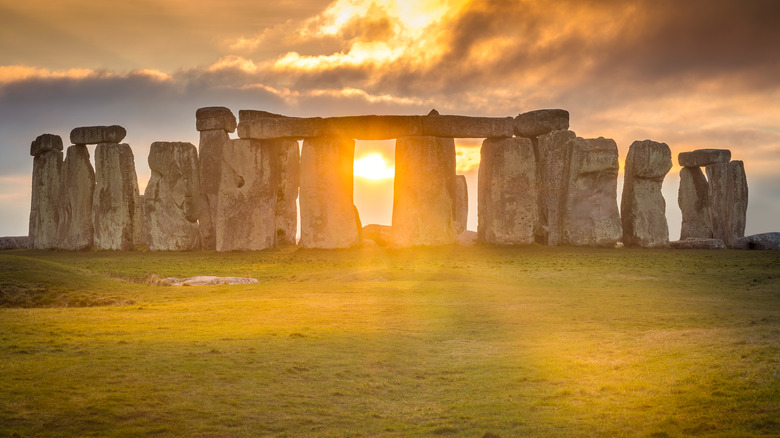What Is The Difference Between A Solstice And An Equinox?
At precisely 3:20pm EST on September 22, 2021, half of the world officially welcomed the fall season – or, to be precise, the autumnal equinox. The next time we'll see an equinox will be on the first day of spring 2022. Apart from being just plain fun to say, the word "equinox" describes the astronomical phenomenon that takes place exactly twice a year.
Derived from the Latin words for "equal" and "night," an equinox occurs when the sun's orbit takes it through the exact center of the extension of Earth's imaginary equator line, via The Old Farmer's Almanac. This results in an almost equal balance of daylight and dark on that particular date. In the fall, the sun crosses the equator from north to south; in the spring, it goes in the opposite direction.
The two other seasons of the year have a designation of their own. In June, the sun's course brings it closer to the equator than at any other time of the year because of the way the Earth is tilted, and in December, the sun is at its furthest point. Those mark the beginning of summer and winter, respectively, and those dates are known as "solstices."
The exact dates of the equinoxes and solstices vary slightly by year, but fall within a specific three- to four-day range. For instance, the fall equinox always occurs between September 21 and 24, via Calendarpedia. And while folks in the Northern Hemisphere celebrate the autumnal equinox in September, in the Southern Hemisphere, that time of year is actually the beginning of spring.
Many celebrations center around solstices and equinoxes
People have honored the changing of the seasons almost as long as they've roamed the Earth. Ancient structures such as England's Stonehenge (seen here) and the Chichén Itzá pyramid in Mexico were designed to capture the path of the sun during the yearly equinoxes. Christians even celebrate their biggest holiday, Christmas, around the time of the winter solstice, which some believe was "a spin-off" of the pagan Yule celebration, according to NPR. However, the same outlet notes that many other cultures that pre-date Christianity also have similar celebrations and rituals.
There are various rituals and traditions associated with each solstice and equinox. For example, the autumnal equinox is considered a good time to say goodbye to a bad habit or unhealthy relationship. Write a goodbye letter to the thing you want to let go of, fold it in three parts (turning it counterclockwise away from you with each fold), and then burn it (via Express). Many European countries celebrate the summer solstice with festivals, bonfires, and gathering of herbs associated with fertility (via Wanderlust).
The spring equinox is also the Iranian New Year festival, known as Nowruz. Families gather for a feast that includes seven symbols on the table, including an apple for beauty, garlic for health, hyacinth for spring, and coins for wealth (via NPR). In Japan, the week of the equinox is a time to honor ancestors and visit family (via Mental Floss).
Chances are, you've already begun celebrating the autumnal equinox in the modern way: by ordering a pumpkin spice latte and looking forward to sweater weather.

